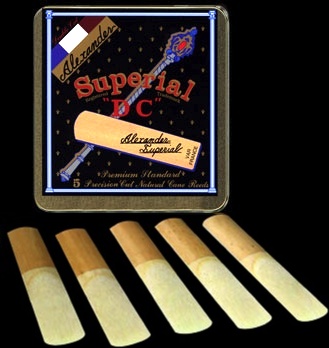After introducing Superial, I wanted to add another
model to our line which I thought might meet the needs of players who were
looking for a different style cut and tonal response.

Using the same cane, we made
exhaustive tests and alterations to fabricate a reed with somewhat changed
response characteristics from the original Superial, and thus the new Superial
"DC" (or "Double Cut) was created.
This reed has a slightly harder tip
and more wood in the heart and sides than Superial and therefore produces a
more solid tonal core, enhanced projection and power, and a little darker
harmonic timbre than Superial, but still one with the kind of "edge" and
authority needed in soloing or lead work.
For "DC" I was thinking in
terms of a tonal concept reminiscent of the saxophonists I had admired and been
influenced by from the 1950's to the "Blue Note", "Miles" and "Trane", and
"Wayne" eras.
I also had in mind a reed of increased power that would
be particularly suitable for big band, stage band or marching reed players, as
well. So in a sense, I worked on "DC" with an idea of making a reed that fit
closest to the tonal palate of my own musical influences and this became the
reed I used on Tenor most of the time.
Since its introduction in 1995,
"DC" seems to be especially favored by professionals who need a lot of power
and want to push the reed to the limits of its dynamic capabilities, while
still retaining an even balance from top to bottom. |
| Alexander Superial DC Reeds |
|
|